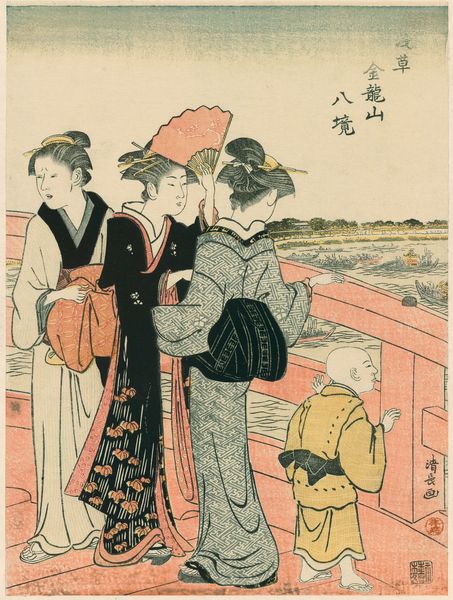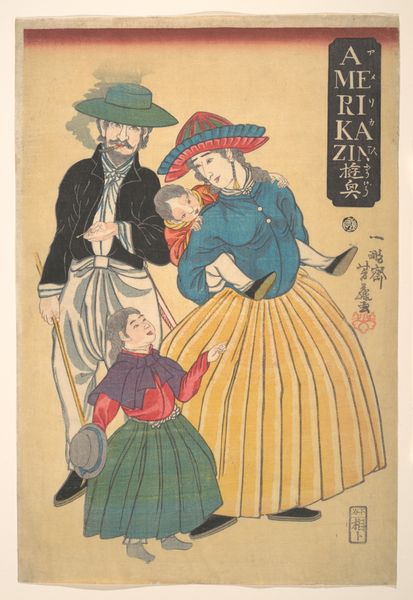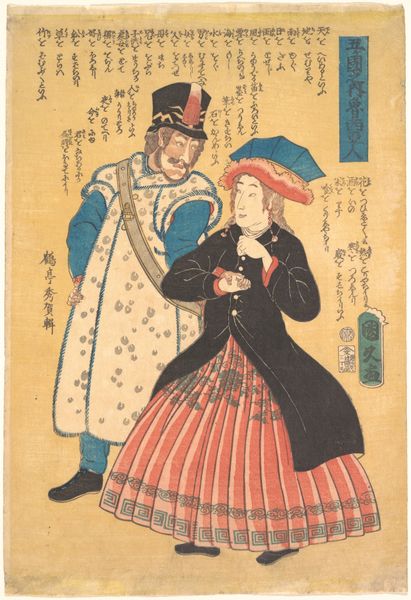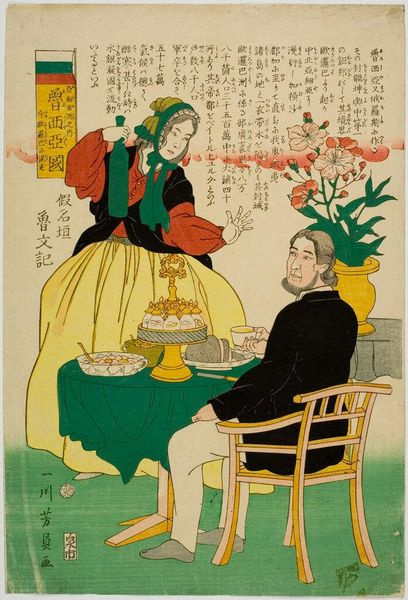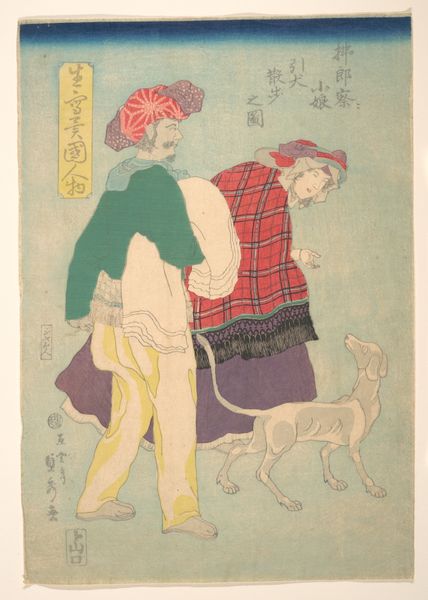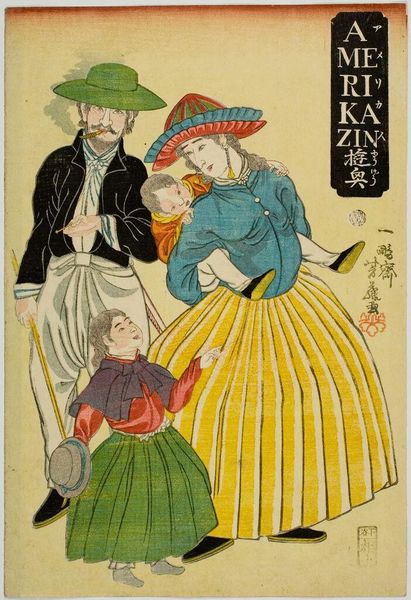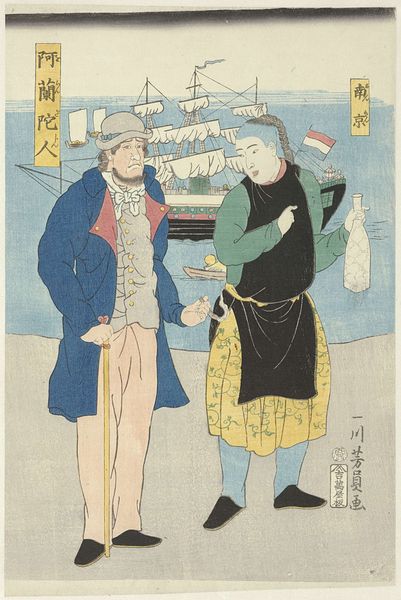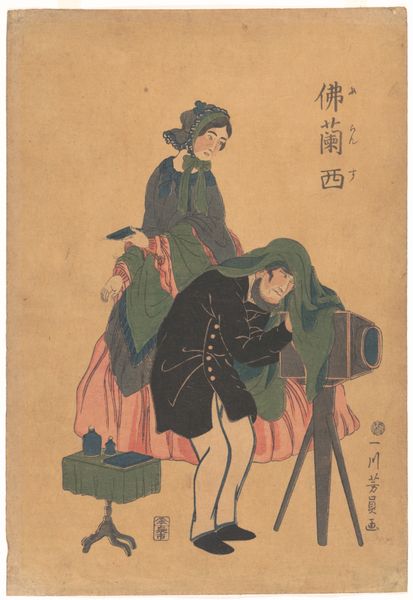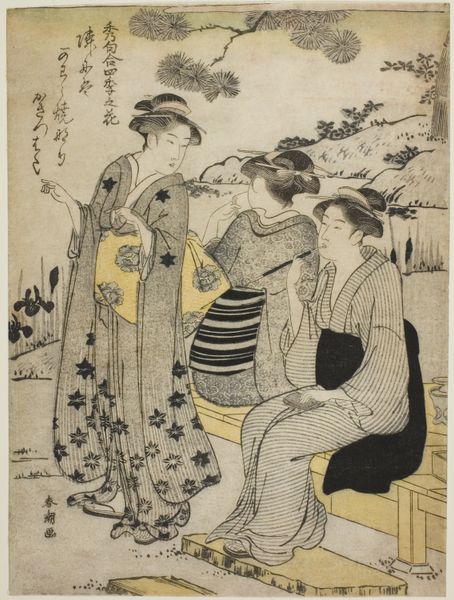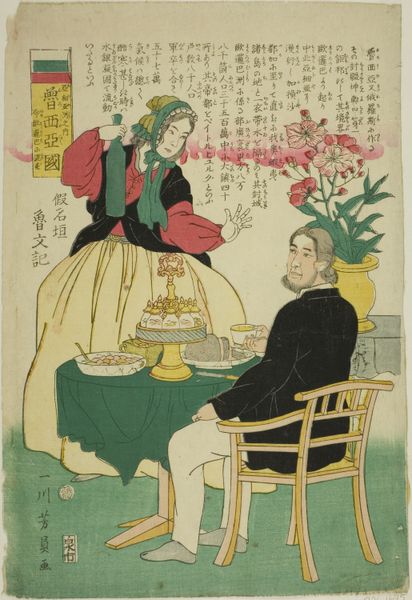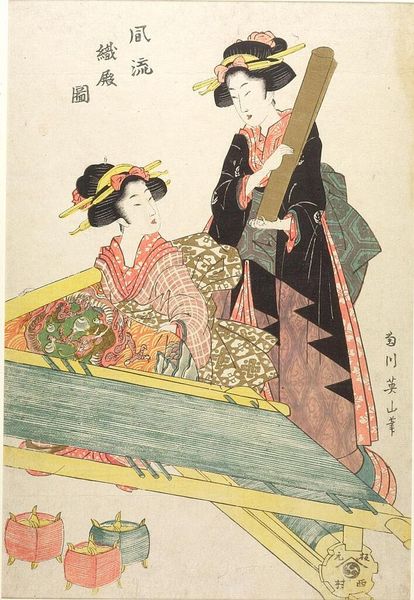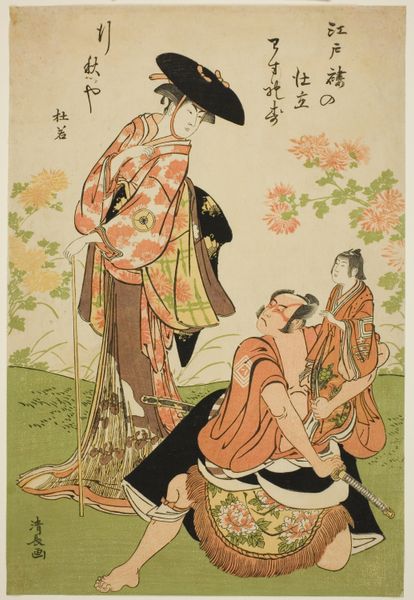
print, woodblock-print
#
portrait
# print
#
asian-art
#
ukiyo-e
#
woodblock-print
#
watercolour illustration
#
genre-painting
Dimensions: height 367 mm, width 250 mm
Copyright: Rijks Museum: Open Domain
Curator: Let's turn our attention to this woodblock print from 1861 by Utagawa Yoshitomi, entitled "Frans echtpaar met dochter." It depicts a French couple and their daughter. Editor: My first impression is one of slight bewilderment, actually. The colours are gentle, but there's a stillness about it that makes it seem both formal and slightly unnatural. It looks very different than other ukiyo-e I've seen. Curator: Indeed, it's fascinating how Yoshitomi incorporates Western attire and physiognomy into the ukiyo-e tradition. Think about the complex process involved. He's working within established printmaking methods and workshop systems. Woodblock printing requires a division of labor – artists for designs, then carvers and printers executing the design, which is itself a complex process of transferring designs onto wood, carving blocks for each color. Editor: The clothing and the European faces stand out so clearly against what I know about Japanese art. Notice how even details such as the wide brim of the father's hat or the mother's bonnet were completely novel images. These foreign elements create a compelling visual symbol: a representation of new international relations that developed after the opening of Japan. Curator: Precisely! We must remember that Ukiyo-e prints like this weren't just aesthetic objects but a form of visual communication within a rapidly changing social landscape. They served as a method to showcase and consume exotic imports. Editor: Consider the significance of depicting the daughter holding the father's hand—suggests a continuity, or the passing of tradition onto a younger generation in the face of outside cultural forces. It underscores how the unfamiliar will shape new meanings, especially through children, as potent symbols of change and continuation. Curator: An insightful point. It illustrates a negotiation and incorporation of Western ideas into their understanding of family and legacy, made visible through clothing manufacture and consumption that had material consequences for Japanese workshops. Editor: And the act of printing it in the ukiyo-e style emphasizes that appropriation is inherent. Even style itself turns into symbol. I can imagine people pondering what these figures represent, as a mirror for themselves and Japan’s place in the world. Curator: Ultimately, by dissecting the social context and production methods surrounding this woodblock, we understand how prints mediated social relationships through production and depicted shifting cultural values during that specific moment. Editor: Looking at it from my perspective, Yoshitomi creates a fascinating tapestry of foreignness and familiarity, hinting at how identities themselves could morph within a globalized society.
Comments
No comments
Be the first to comment and join the conversation on the ultimate creative platform.
